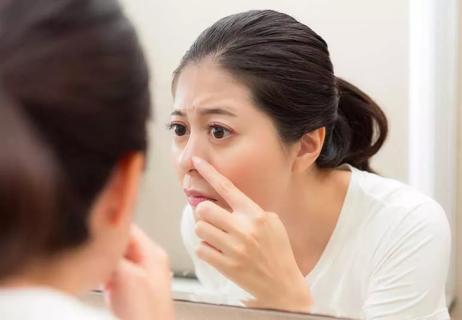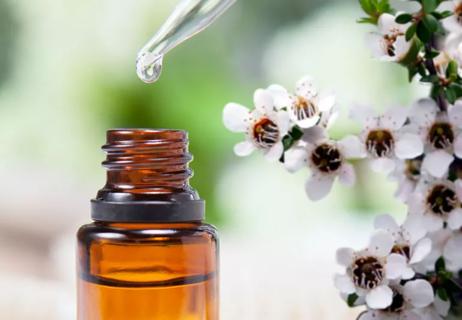A dermatologist explains why it happens and how to address it

Sweet, you got a new nose piercing! What’s not so sweet is that you now have an additional and unwanted accessory — a little bump of skin that’s forming around the piercing site as it’s healing.
Advertisement
Cleveland Clinic is a non-profit academic medical center. Advertising on our site helps support our mission. We do not endorse non-Cleveland Clinic products or services. Policy
What’s happening, and what can you do about it? Is your piercing predestined for removal? The bump could be the result of a few different skin reactions, so the first order of business is to get to the root of your issue.
We talk to someone who nose — err, knows — best, dermatologist Alok Vij, MD. He walks you through everything you need to know about dealing with the dreaded nose-piercing bump.
A piercing is essentially a wound to your skin, even if it’s an intentional one, so some unwelcome side effects are to be expected — at first.
It’s normal to experience redness, swelling and even a little bit of pain after getting your nose pierced. These symptoms should start fading within a few days. But if you notice that a bump has formed around your piercing, whether inside or outside of your nostril, a few things could be happening.
Hate to break it to you, but you very well might be allergic to that cool piece of jewelry you picked out for your new piercing. If you have a metal allergy (the most common ones are nickel and cobalt allergies), your body could be trying to fight off your new nose ring or stud as though it’s a foreign body.
“Allergic reactions are most common in people who have a history of atopic dermatitis (or eczema) and who have previously been sensitized to common metals that drive allergic contact dermatitis,” Dr. Vij explains.
Advertisement
An allergic reaction can cause itchiness, redness, swelling and maybe even some blistering, which could result in bumpiness — but if you have just one bump on its own, you’re probably looking at another issue.
What to do: If you think you’ve got an allergy, swap out your jewelry for a hypoallergenic version, like surgical stainless steel, sterling silver or 14-karat gold. (And if you’re reading this before you’ve been pierced, just choose one of those metals to begin with!)
That little bump could be a pustule, which looks like a little pimple or blister — and just like with a pimple or blister, you shouldn’t try to pop it. Pustules are a sign of an infection, and they can be filled with blood and even pus. Ouch!
“An infection will be swollen, painful, look red and feel warm to the touch,” Dr. Vij says. “It’ll be tender when you press on it.”
What to do: Over-the-counter antibiotic ointments aren’t likely to help, since the infection is deeper than the skin’s surface. “Start with warm compresses, which will increase the blood flow to the area and allow your body’s immune system to track into that space,” Dr. Vij advises. “You should also clean gently with soap and water.”
Your body can typically fight off the infection on its own, and the pustule should disappear. See a doctor immediately, though, if you start feeling sick and have shaking, chills and fever. Your nose is part of an area known as the “danger triangle,” which means infections that start there can, in rare cases, impact the rest of your body and even your brain.
Sometimes, an injury to the skin results in a pyogenic granuloma, a little bump that contains extra blood vessels that form to try to protect you. “Your body sees a foreign invader and tries to create a wall to block it off,” Dr. Vij says.
These soft bumps are usually pinkish, reddish or even blackish-brown, and they ooze or bleed easily.
What to do: Granulomas usually go away on their own. “Watch it carefully for a few days or even a week, and it’s probably OK as long as it stays relatively small,” Dr. Vij says. “If it becomes more symptomatic, go see a dermatologist, who can do cultures to make sure there’s not an infection.”
Keloids are raised scars that extend beyond the initial injury — and if you’ve gotten a keloid in the past, you’re more prone to them in the future. They’re especially common among people who have Black, Caribbean, South Asian and Middle Eastern heritage.
The good news, Dr. Vij says, is that keloids on nose piercings are relatively uncommon. They’re more likely to appear on ear piercings, especially high up on the cartilage.
What to do: “Keloids can be extraordinarily difficult to treat,” Dr. Vij says. “If they’re left on their own and continue to grow, they can become disfiguring, and the treatments can become quite aggressive in order to be effective.”
Advertisement
Keloids don’t go away on their own, either. If you’re developing a keloid around your piercing, remove the jewelry right away and talk to a dermatologist about next steps. They may be able to reduce the keloid with corticosteroid injections.
There’s no surefire way to keep a bump from developing at the site of your nose piercing, but there’s one important thing you can do to minimize your chance of infection: Keep it clean.
For starters, make sure any piercings are done by a trusted and trained professional who knows what they’re doing, uses proper equipment and keeps everything spick and span. Then, once you’ve been pierced:
Advertisement
Learn more about our editorial process.
Advertisement

Soap, water and an antibiotic ointment are your best bet

It isn’t risk free and shouldn’t replace the aftercare recommended by your piercer

Understand the risks and take precautions against infection

A Q&A to prepare you for a smooth piercing experience

Removing the piercing as early as possible is important for avoiding complications

Twice-a-day cleaning with a saltwater solution can help you resolve (and avoid) problems

Most recommended precautions center around minimizing bruising or swelling

Type 2 diabetes isn’t inevitable with these dietary changes

Applying a hot or cold compress can help with pain